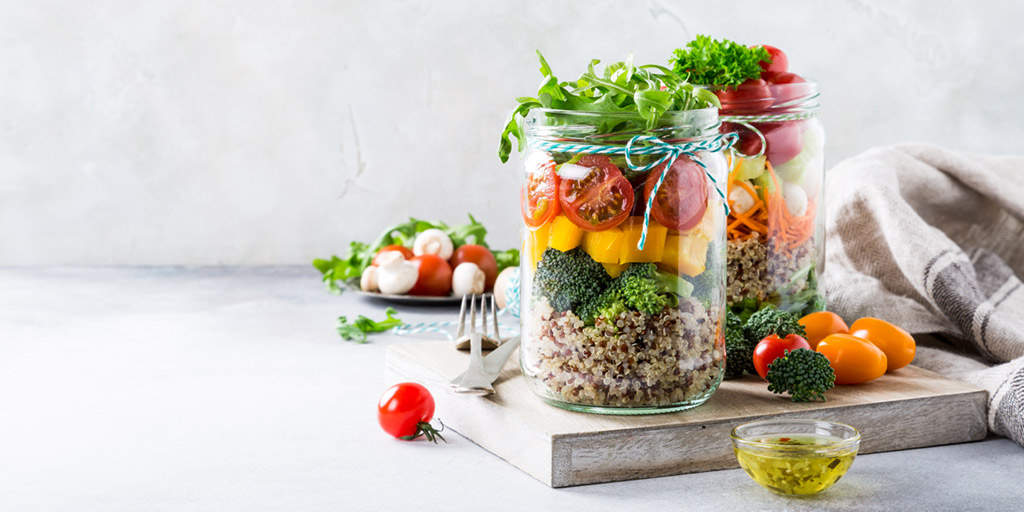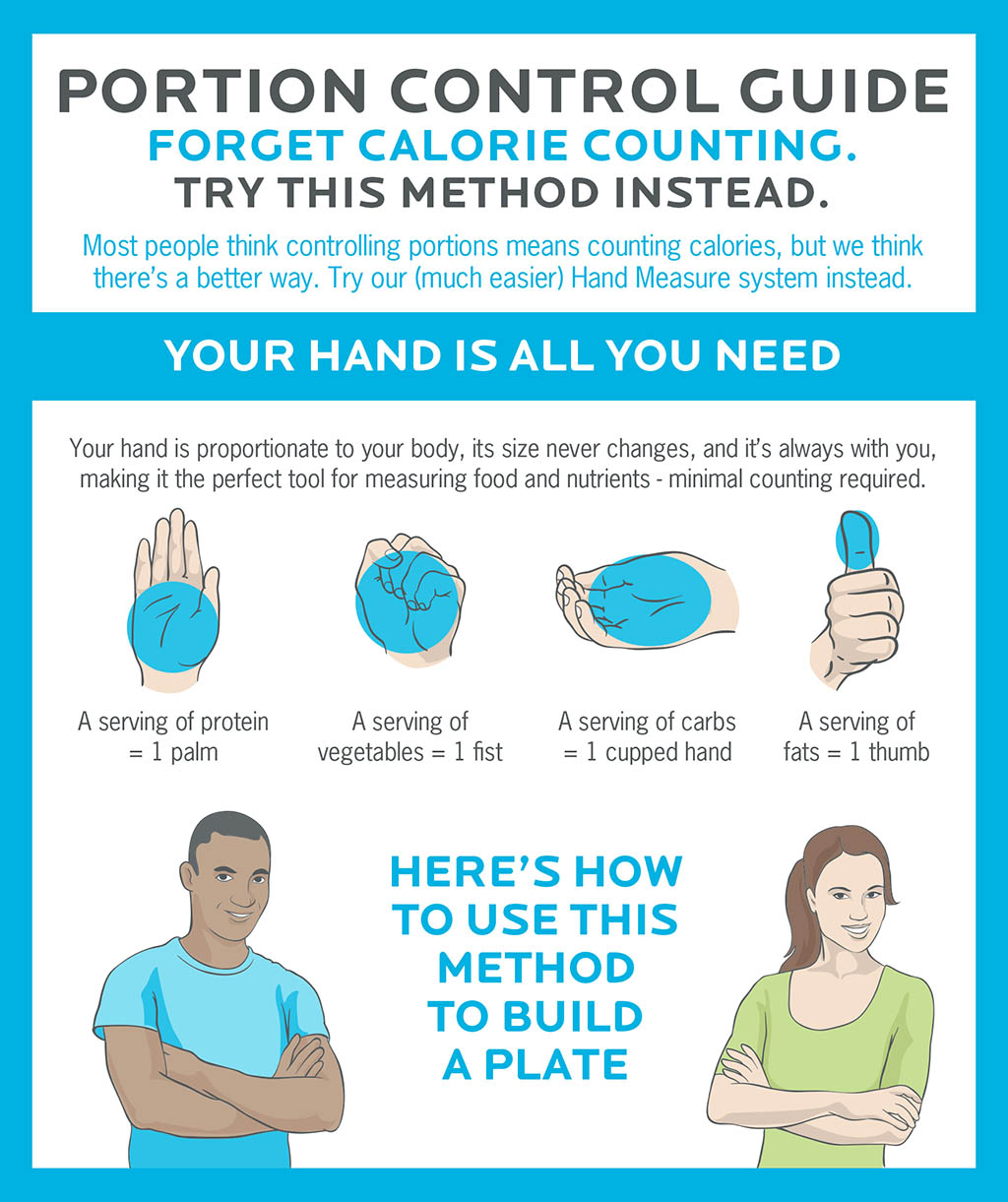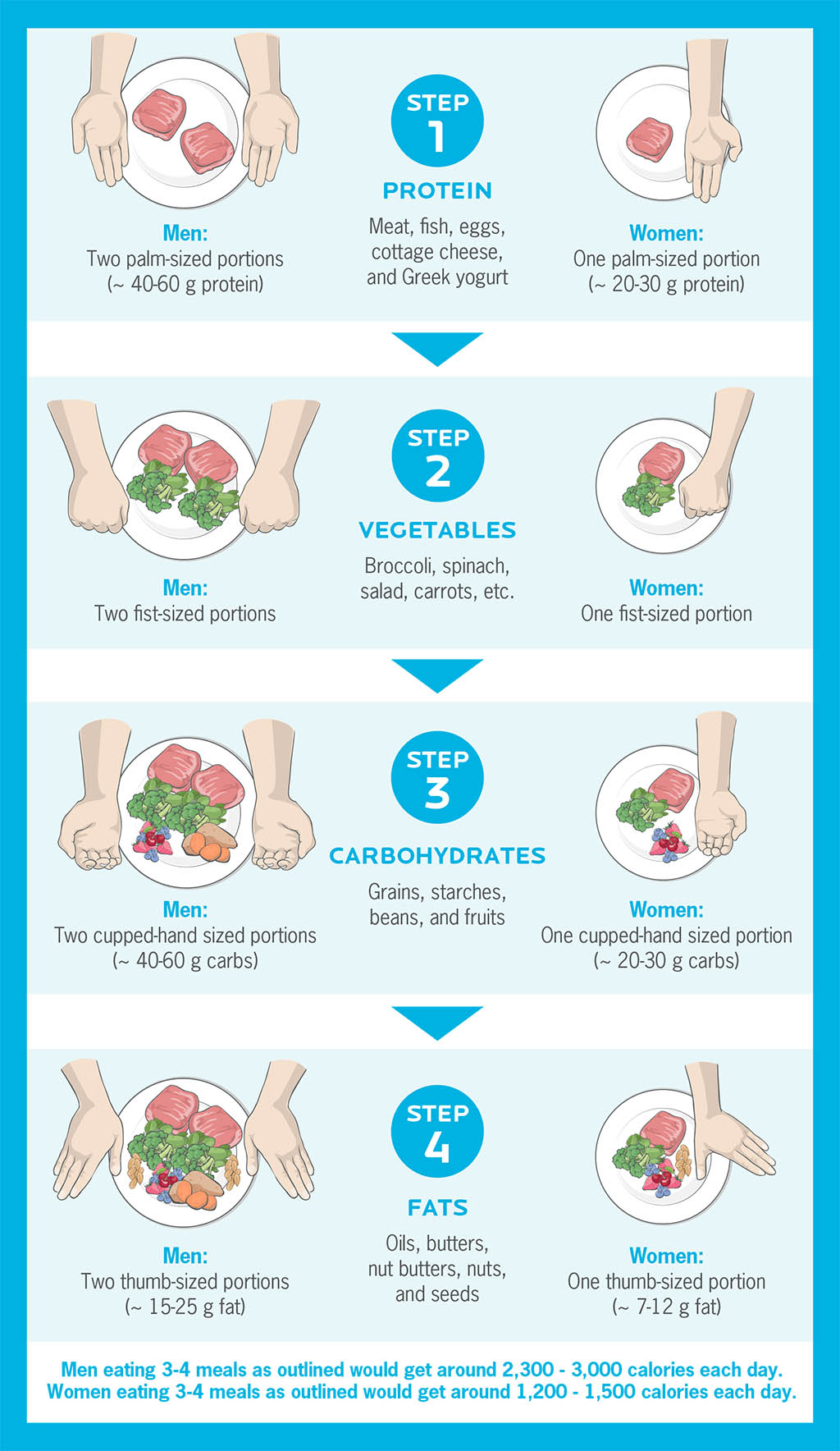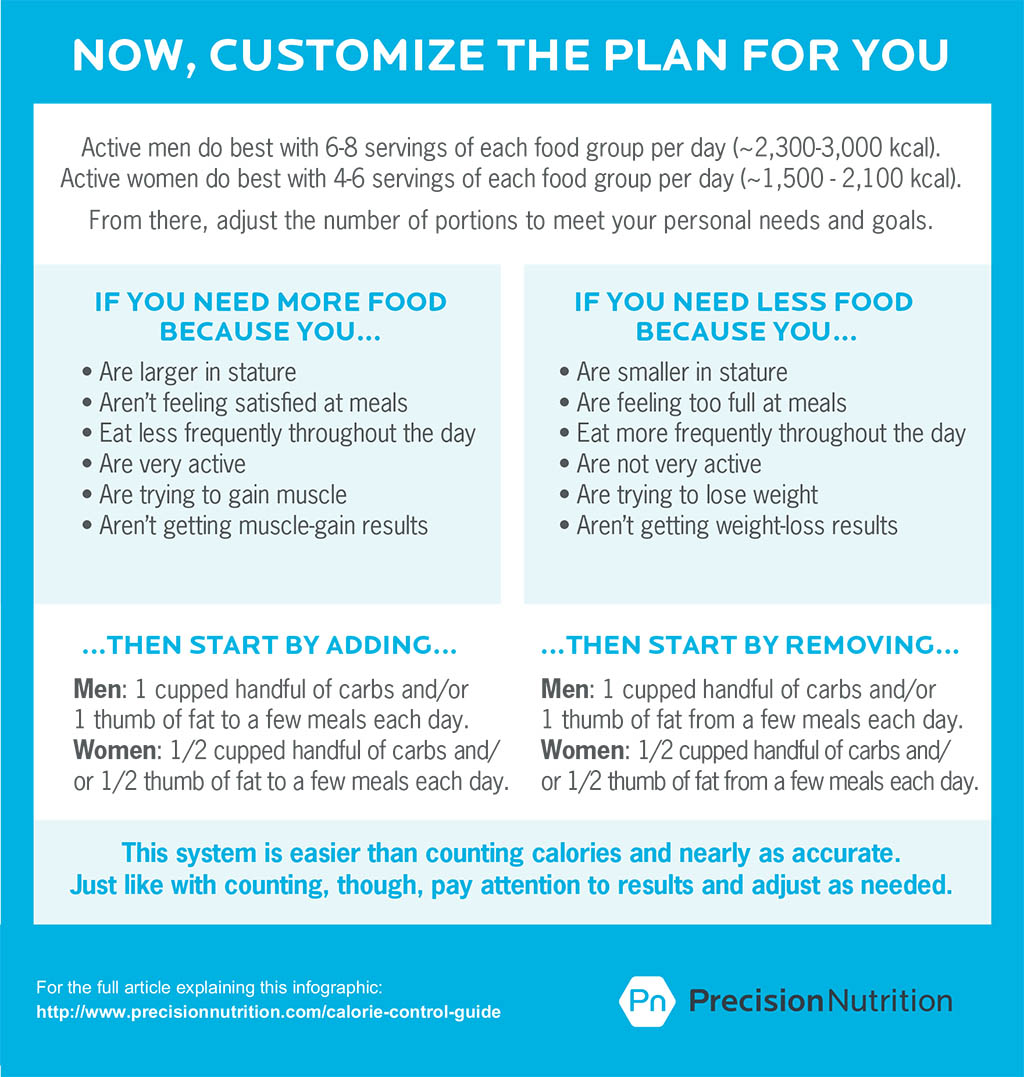Health and Fitness: How much do we need to eat, really?
 CREDIT: MERINKA (THINKSTOCK)
CREDIT: MERINKA (THINKSTOCK)Figuring out how much we need to really eat can be a challenge, but with the right tools on hand, it becomes easier to fully understand.
Five to ten a day was the old saying for the amount of fruits and vegetables we should eat on a daily basis. I don't know about you but that is a big difference (especially for a little 5'2” gal like me) and it was confusing to most as it doesn't tell us how big the portion is. So let's talk portions first.
Canada's Food Guide and the American Food Guide both suggest portions for us in terms of measurement (tsp., tbsp., cups, ml, L, oz., etc.). Unless you have measuring cups with you all the time, this can be some really hard guess work. Plus, sometimes you're so hungry you just pretend that the portion is ok or don't really care in that moment.
An easier way to go about it is to use your hands: a palm size serving is about one serving of meat, a thumb size serving is about a serving of oil or nut butters, two fingers is a serving of cheese or nuts, your hands cupped together is a serving of leafy greens, and more. See the infographic (with this article) for more information on hand portions.
So does that mean Lebron James will have bigger portions than me? Yes! Portions should be relative to your size or your ideal size. A 5'2” female does not need as much food as a 6'8” male. Even a 6'8” female may not need as much as a male the same height. Generally, women tend to have a smaller frame and require less, but this is only generally speaking.
Portion sizes aside, how much do you need to eat over the course of the day? Well, this is based on many factors: exercise duration, intensity and type; your occupation or daily lifestyle habits, sleeping patterns and the type of food you are eating. It's actually really hard to even speak in general terms as we all lead such different lives. So let's look at a couple examples of typical college students.
Student #1 has 30 hours of class a week and its spread out pretty evenly four days of the week and then one day with an optional lab class. They have a part time job on the weekend at a restaurant/bar. They spend a couple hours each night studying/doing homework. They would benefit from eating something within the first few hours of waking up. It would be best to have lean protein (to help them feel full), a little plant based fat (for brain power throughout the day and also to curb hunger) and a small amount of carbs for some energy to get them to class. Their breakfast plate might be one to two eggs, 1/2 cup (half palm) of cooked quinoa with � cup of saut�ed vegies in olive oil. For a more active or person, they may add more quinoa and veggies, or maybe an apple with some peanut butter or cottage cheese. For lunch it could be a salad with lean protein on top, maybe a snack later of veggies and hummus and then dinner is a turkey on whole grain wrap with veggies and balsamic vinaigrette. If they work out after dinner, maybe have a banana smoothie with protein powder and Coconut milk.
Student #2 has a heavy class load and works at placement two days a week as well as a part time job four to five shifts a week. This person needs to master the art of healthy snacks and healthy portable foods.
The best thing to do is to eat something every three to four hours, but it doesn't have to be a full meal, just something to boost energy and to keep satisfied so you don't overeat later. A combination of healthy carbs, fat and protein each snack is best. Try things like smoothies (split up into one cup portions for one to three per day), homemade trail mix or protein bars (no added sugar or salt), veggies and hummus or Greek yogurt tatziki, hard boiled eggs, rice crackers and peanut butter, meal sized salads portions out in smaller containers, chicken kebobs, Sweet potato boats with cooked ground beef and peas, oatmeal and berries, etc. The best thing to do is to be prepared with healthy meals and snack and to eat when you are hungry. Don't fret if your meals are not the same time every day. Unless you are training for a fitness or elite sporting competition, your routine does not need to be strict. However if this keeps you on track with your goals then go for it. Eat until you are 50 to 80 per cent full, decide if you are satisfied and maybe eat the rest later. Drink two to three litres or four to five 750 millilitres water bottles daily to stay alert and hydrated.

















